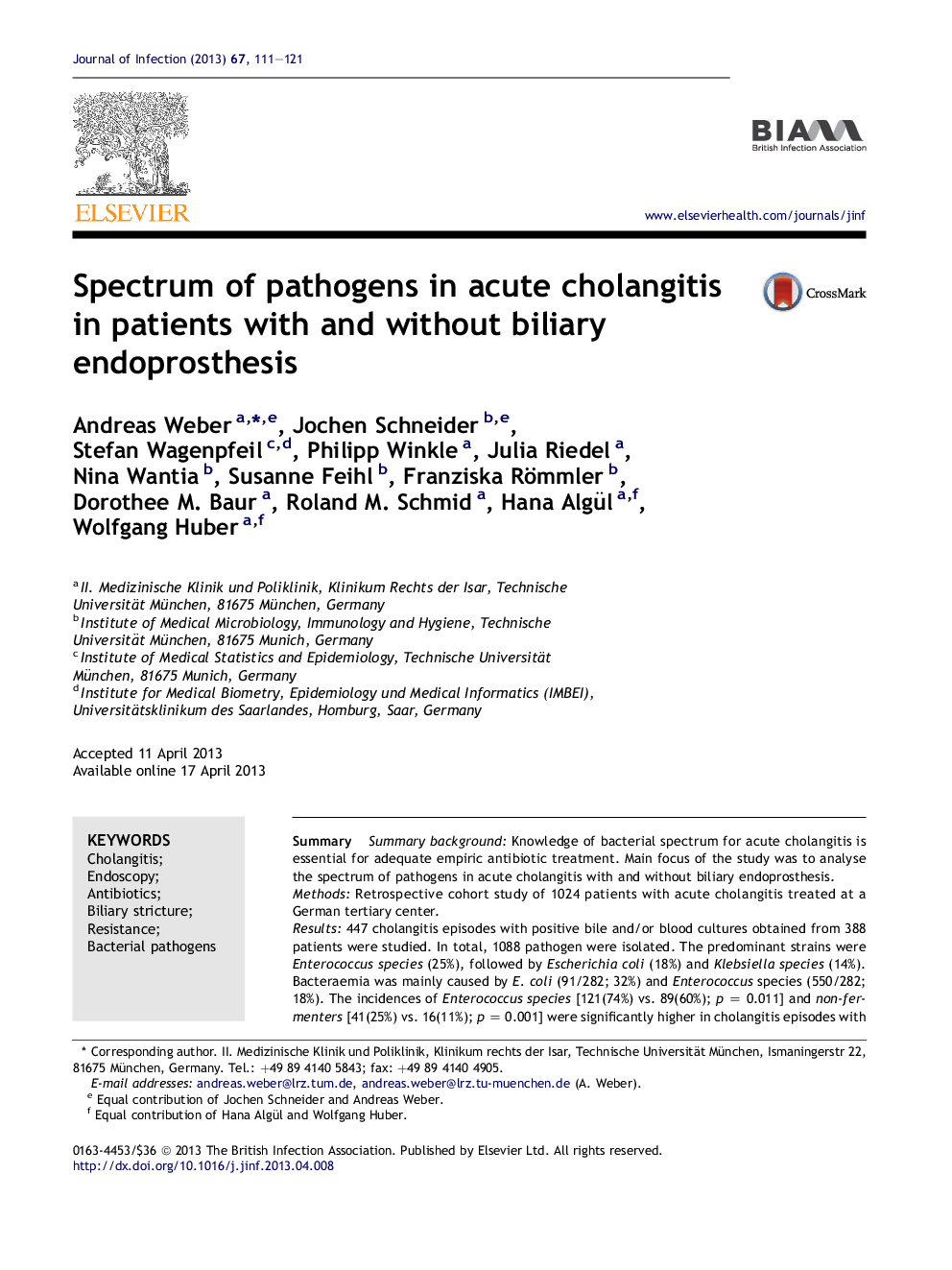| Article ID | Journal | Published Year | Pages | File Type |
|---|---|---|---|---|
| 3374587 | Journal of Infection | 2013 | 11 Pages |
SummarySummary backgroundKnowledge of bacterial spectrum for acute cholangitis is essential for adequate empiric antibiotic treatment. Main focus of the study was to analyse the spectrum of pathogens in acute cholangitis with and without biliary endoprosthesis.MethodsRetrospective cohort study of 1024 patients with acute cholangitis treated at a German tertiary center.Results447 cholangitis episodes with positive bile and/or blood cultures obtained from 388 patients were studied. In total, 1088 pathogen were isolated. The predominant strains were Enterococcus species (25%), followed by Escherichia coli (18%) and Klebsiella species (14%). Bacteraemia was mainly caused by E. coli (91/282; 32%) and Enterococcus species (550/282; 18%). The incidences of Enterococcus species [121(74%) vs. 89(60%); p = 0.011] and non-fermenters [41(25%) vs. 16(11%); p = 0.001] were significantly higher in cholangitis episodes with biliary endoprosthesis compared to cholangitis episodes without biliary endoprosthesis. In particular, more Pseudomonas aeruginosa [27(16%) vs. 12(8%); p = 0.027] and Enterococcus faecium [59(36%) vs. 34(23%); p = 0.013] were isolated from patients with a biliary endoprosthesis.ConclusionsUnlike cholangitis without stent, the presence of biliary endoprosthesis in patients with cholangitis can serve as a surrogate indicator of nosocomial pathogens and therefore should be considered, when selecting empiric antimicrobial therapy.
